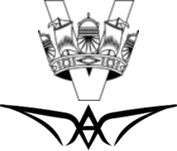Universal Carrier
The initial idea for the Universal carrier can be traced back to the 1920s Carden Loyd tankettes. Carden-Loyd Tractors Ltd, was founded by Sir John Carden and Vivian Loyd but later taken over by Vickers-Armstrong. In 1934 Vickers designed a light tracked vehicle for use as a machine gun carrier or as a tractor for a light field gun. Initially there were specialist designs for different purposes but by 1940 it became clear that a ‘Universal’ design was preferable.
The carrier layout is very simple. Driver and Commander sit side-by-side in the front compartment with the hull in front of the commander's position extended forward to allow for a weapon to be fired. The engine was in the centre of the rear compartment with areas on both sides in which passengers or supplies could be carried. Final drive was at the rear with suspension from a combination of Vickers light tank parts and Horstmann springs.
Steering was achieved via a clever dual action system controlled by a single vertical steering wheel. Applying a small amount of steering moved the front road wheel assembly so the tracks became warped and the vehicle drifted in the desired direction. Further application of the steering wheel would then brake the track so the vehicle turned more sharply.
The Universal Carrier was produced from 1934 until 1960. Widely used by British and Commonwealth forces during WWII by 1945 production numbered around 57,000, including some 2,400 early ones. At the end of its production it was the most produced armoured fighting vehicle in history, approximately 113,000 having been built. Production was spread across the Commonwealth, The Ford Motor Company of Canada built 29,000 Universal Carriers. Australia produced about 5,000 and a further 1,300 were manufactured in New Zealand.
Strickland Bren Tractors
In post war Australia there was a major shortage of agricultural tractors. One solution was put forward by Engineer Jack Strickland of Albert Park. He utilised the surplus of Universal Carriers modifying them for use on the farm.
Modifications included cutting off most of the armoured body work to lighten the vehicle, moving the driving position to the right rear and changing from a steering wheel to a lever system. To adapt the engine of the tractors run on kerosene a vaporiser was fitted. Wider tracks were fitted and a swinging drawbar to tow farm implements was added at the rear. 150 were modified over a six year period to 1952 selling to farmers for £275.
Sable Island
Sable Island is a 44-km-long sand bar situated 300 km (190 mi) southeast of Halifax, Nova Scotia. The island was first explored around 1520–1521. The French briefly attempted colonization in the 16th century using convicts but the efforts failed. There after the Island was sporadically inhabited by shipwreck survivors, sealers and "wreckers".
Sable lies near the junction of three major ocean currents, the Gulf Stream, the Labrador Current and the Belle Isle Current making the currents around Sable very tricky. It also suffers from weather issues. Sable has 125 days of fog a year produces by warm air from the Gulf Stream hitting cold air from the Labrador Current. Together this makes Sable a very stormy place which also lies right in the path of most storms that run up North America’s Atlantic coast. It is extremely treacherous for sailing ships which were simply blown onto the sands, sailors called this island (hidden by waves, storms and fog), ‘The graveyard of the Atlantic’. There have been over 350 recorded shipwrecks on Sable Island since 1583.
A life-saving station was established by Nova Scotia Governor John Wentworth, in 1801, and started a continuous human presence on the island lasting to this day. By 1809 the humanitarian settlement had built up. It included a central station, two rescue boat stations, several lookout posts and survivor shelters. The Canadian government took over administration in 1867 and started upgrading the safety services installing two lighthouses in 1872, one on the eastern tip and Sable Island and the other on the western end.
Prior to1947 the principal navigation instrument used to fix a ship's position was the Sextant. A very accurate Instrument but entirely dependent on being able to take a sighting from the sun or the stars. In dense fog or cloudy skies they were useless meaning captains had to navigate by "dead reckoning". Ship wrecks were common. The entire 44 km coast line could not be patrolled from a single station, so there were 5 stations along the island's length by 1895. The Main Station had a Sailor's Home where survivors could wait for the next steamer to Halifax. The lifesaving crew's spent their days maintaining buildings and equipment, carrying out lifesaving drills, and actual rescues, or finding ways to supplement their diet hunting ducks and seals for fresh meat and picking cranberries.
After WWII the advent of RADAR and satellite systems the number of wrecks has reduced significantly with only one vessel, the small yacht Merrimac, lost since 1947. So what had been home to generations of life-saving crews and the lighthouse keepers slowly became a quite, almost deserted, island again. The Canadian Coast Guard (CCG) first automated, then decommissioned, the light stations and the rescue station was reduced and eventually closed in 1958.
Our model represents a Universal carrier which was used to tow lifeboats, a job previously been done by horses, up and down the coast to launching positions suitable for the crisis at hand. Little is known about it but it is our tribute to the brave souls who saved countless lives and to a weapon of war that ended it’s days saving lives not taking them.


1/72nd scale kit
Built by Ian
Ian originally built this model as a boy back in the late 1970s, and not particularly well either! But after decades in Rods loft it eventually came back to Ian who decided to renovate it. Particuarly taken with the idea of a weapon of war saving lives rather than taking them he settled on the idea of te Sable Island life boat tug.
That was when the trouble began. Getting information on the vehicle from the Canadian Coast Guard or the Museums proved very difficult so the colour scheme is a matter of conjecture and common sense. The carrier could only be serviced and maintained by the local crew with what they had available. As white, black and red paint are clearly available for painting the buildings it seems reasonable to expect that when the North Atlantic weather took it's toll that these colours, which are also the colours of the life boats, would be used.
After a year of waiting for replies to messages and letters Ian decided to go ahead with the model on this basis. Much of the parts had to be scratchbuilt though the spares box provided several handy items. Cooking foil was used to make the radio canvas cover and 'litho'plate to make the stowage carrier frames and aerial mount. Many of the kit parts were thinned down or replaced to get a more realistic scale look.
All the painting was done by brush to try and replicate the idea of a vehicle that had been repainted several times. Acrylic paints from 'Decoart' and 'Citadel' were used alongside some Humbrol enamels for the military colours. Ian used a system pioneered by a friend from Stafford IPMS branch, Richard Howden. In simply terms you paint in a dark colour then use successive layers of lighter colours, each time leaving the darker areas in the shaded corners and depths, moving to wards brightening the open areas.
RETURN TO :-
